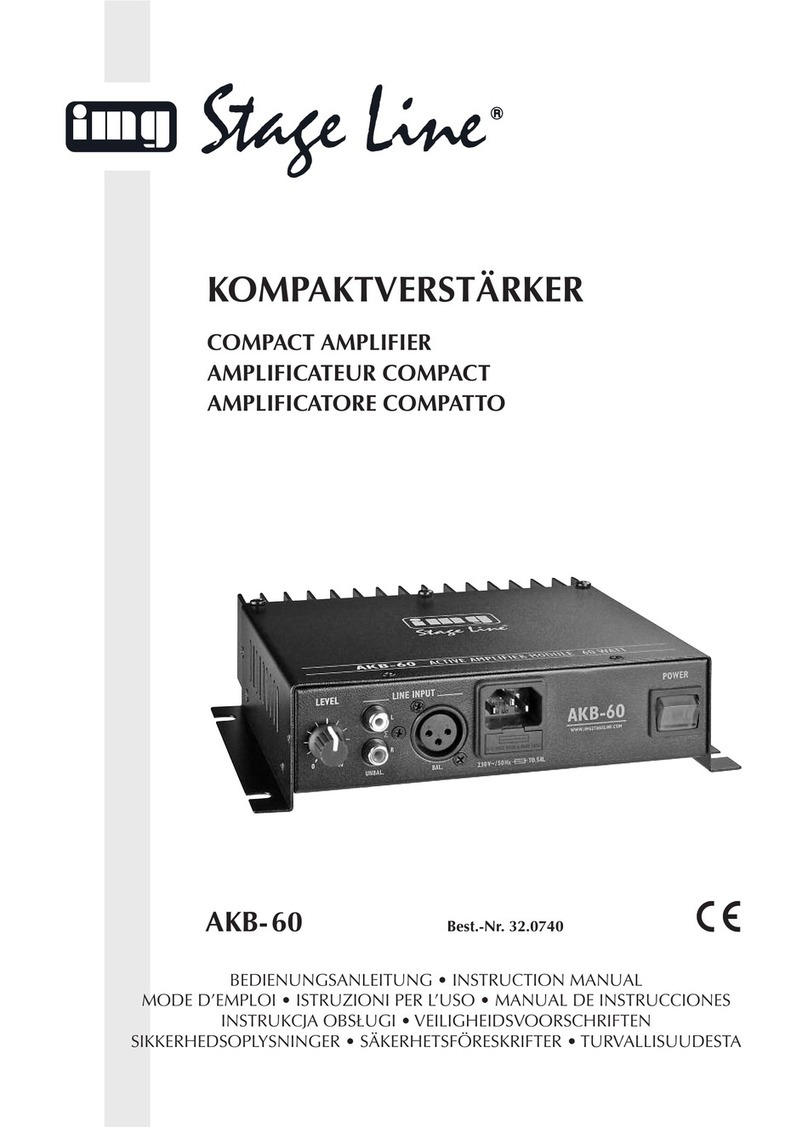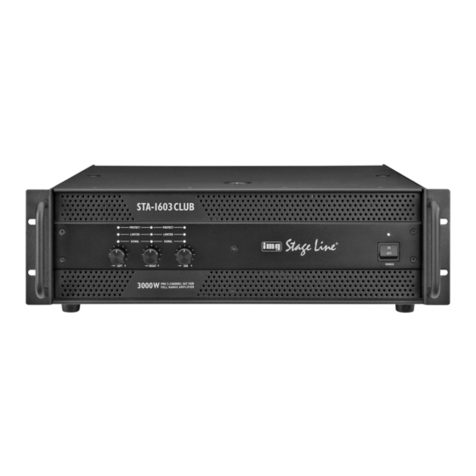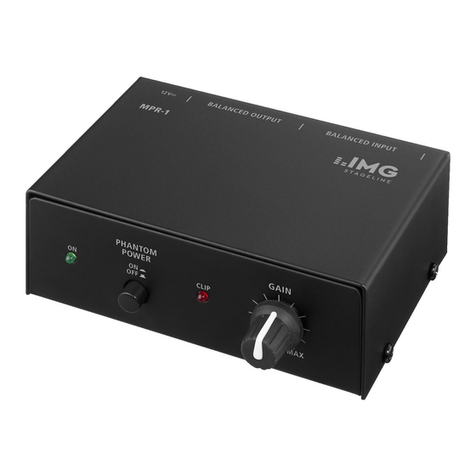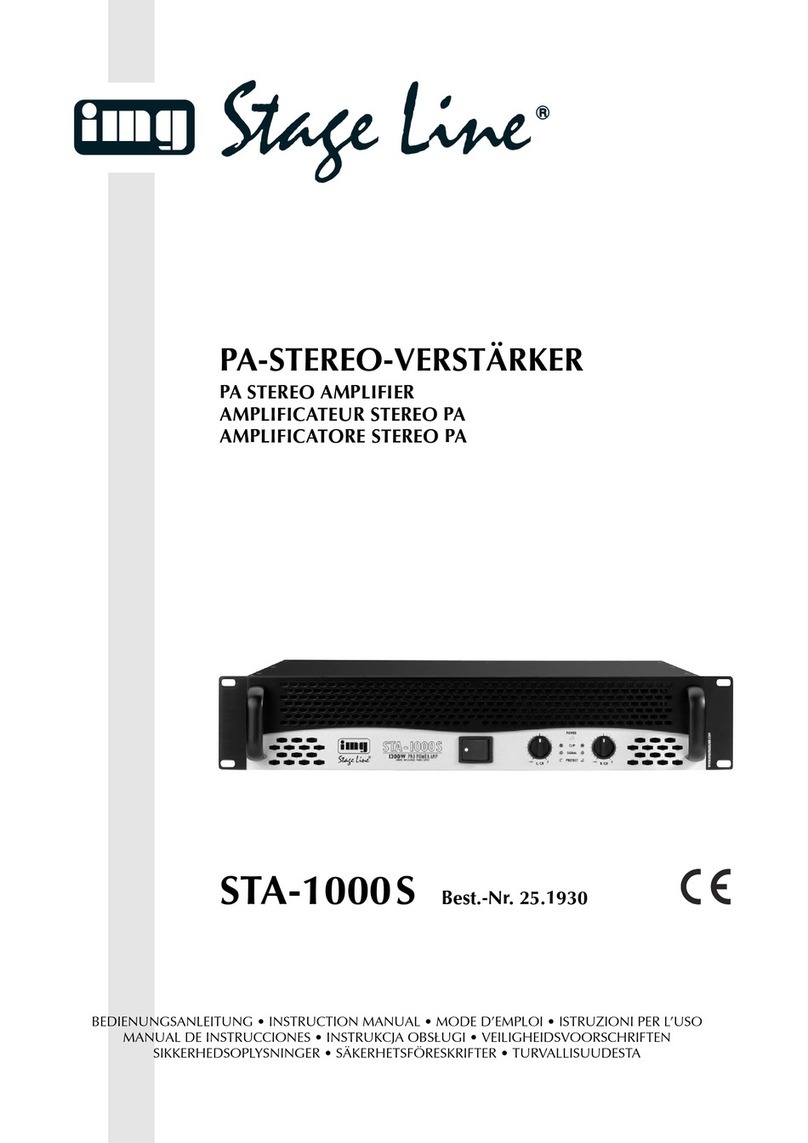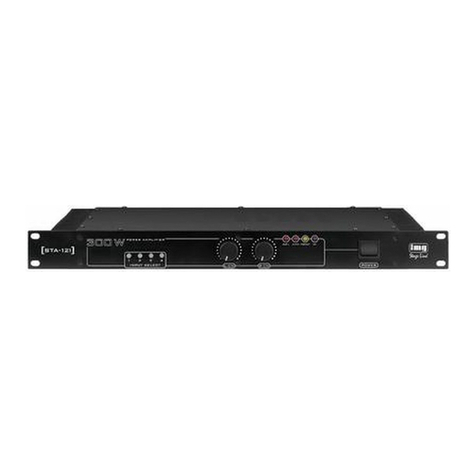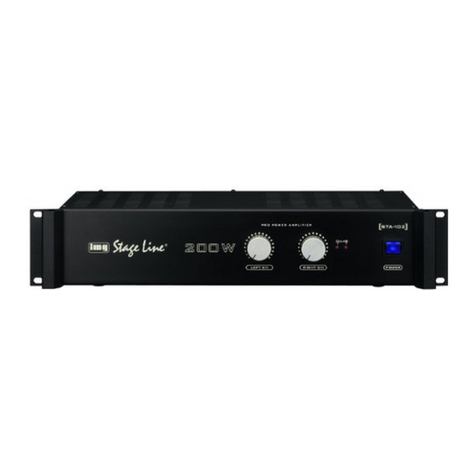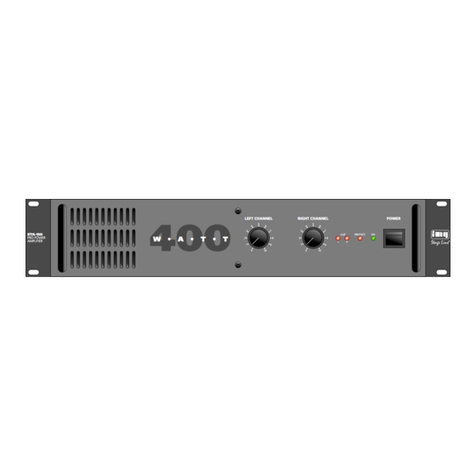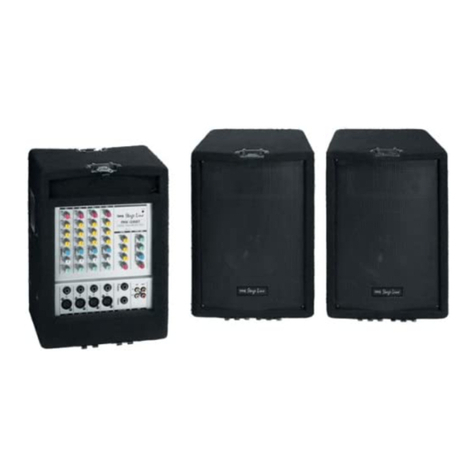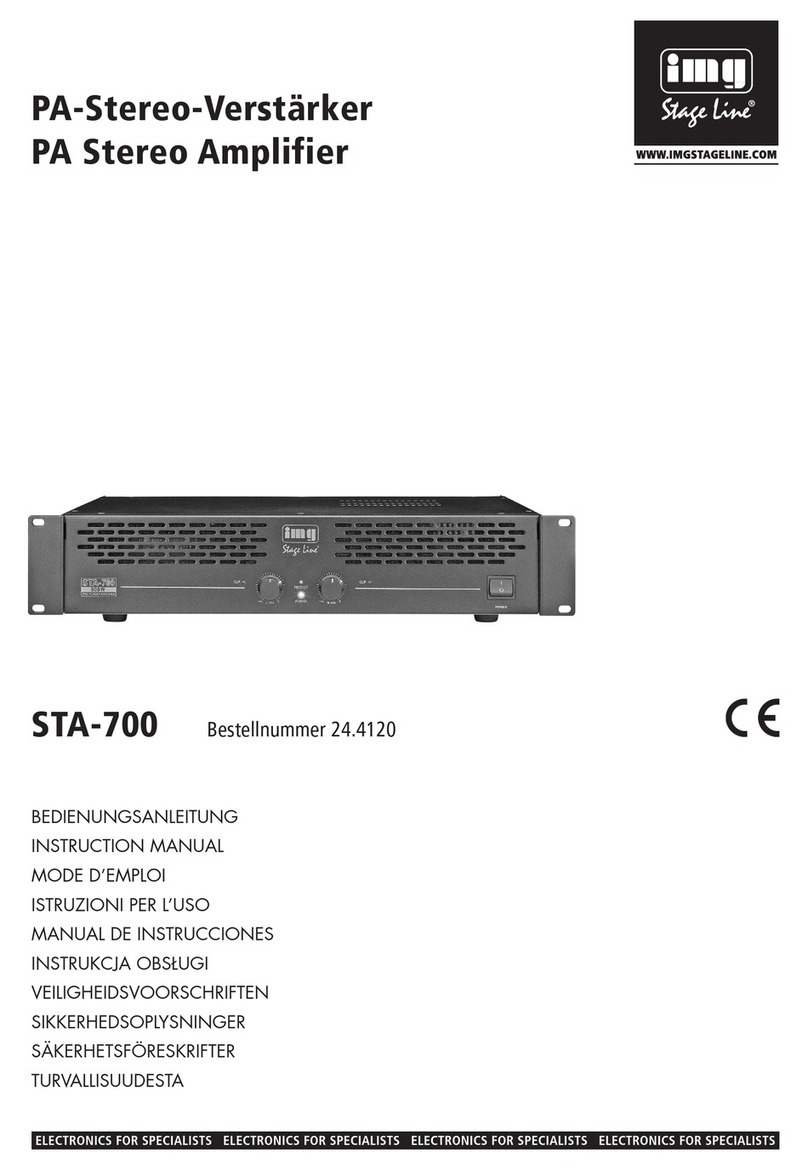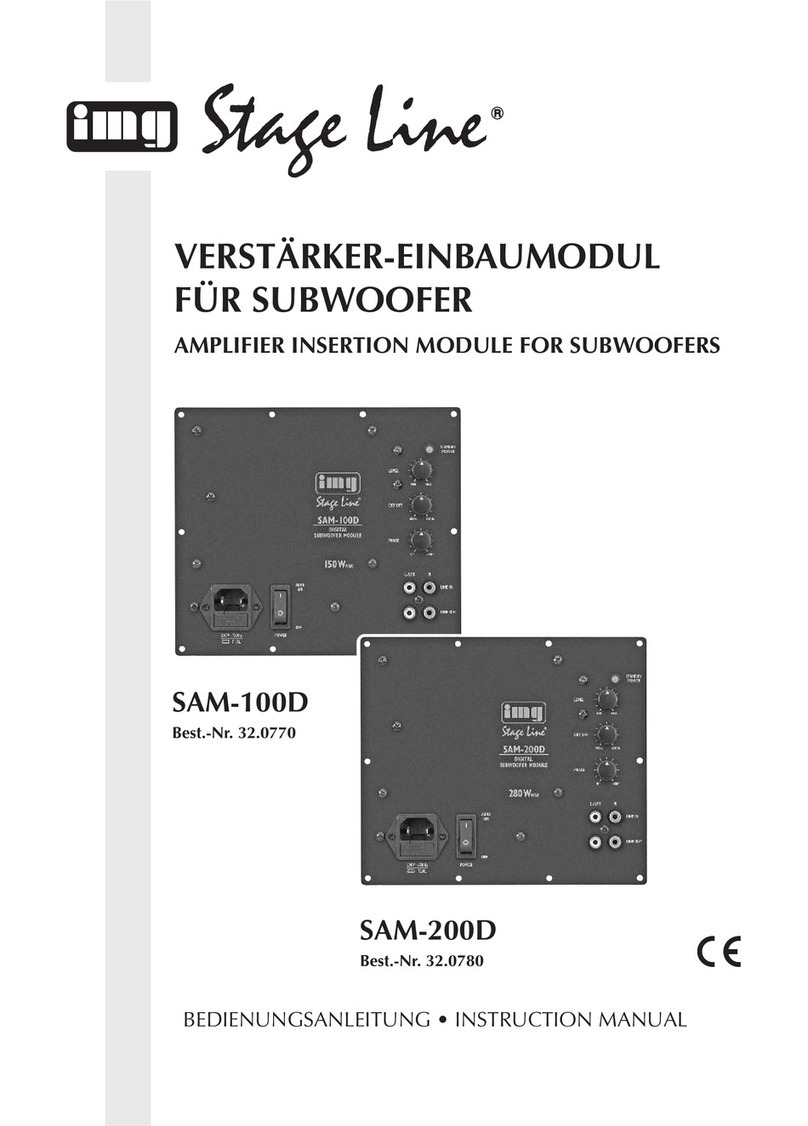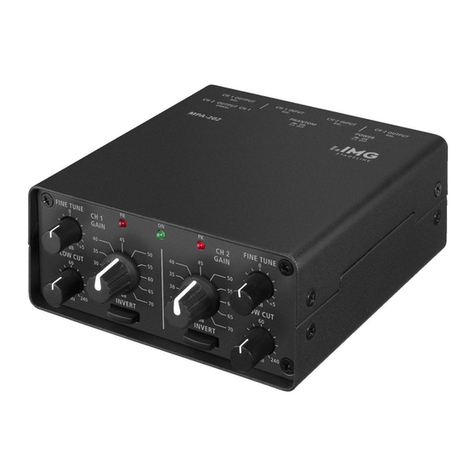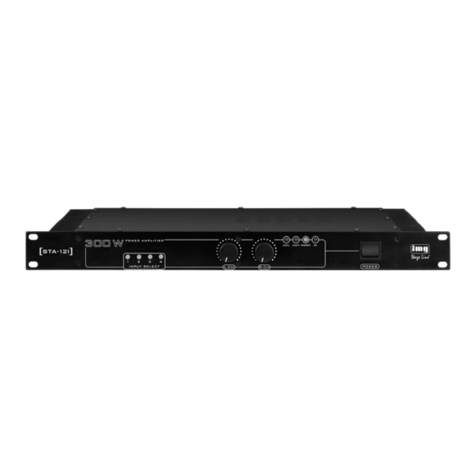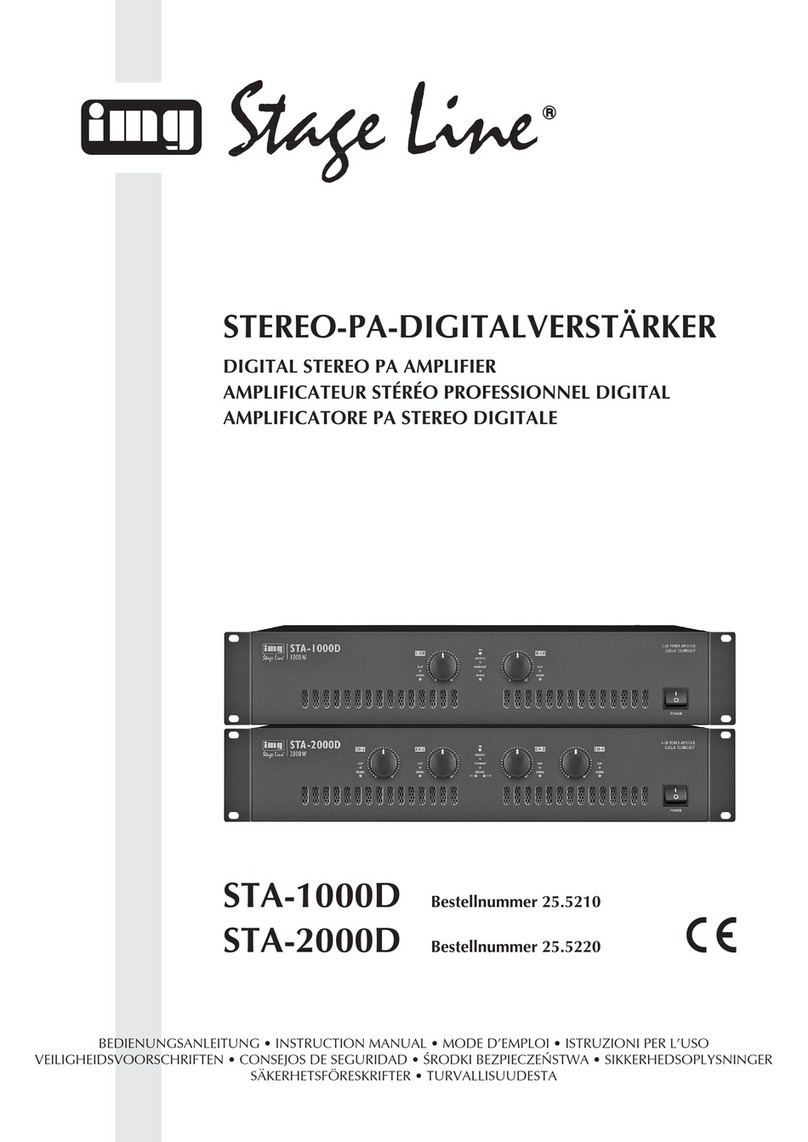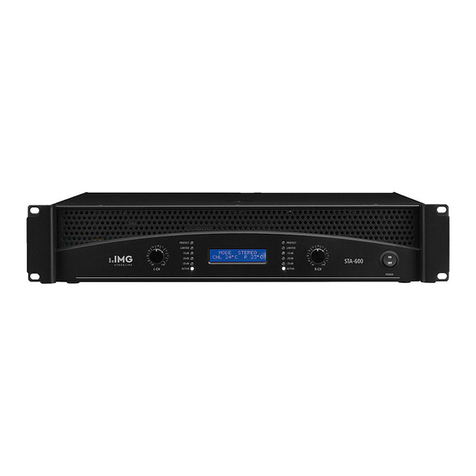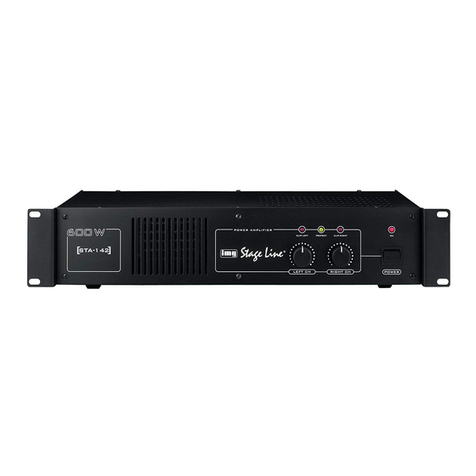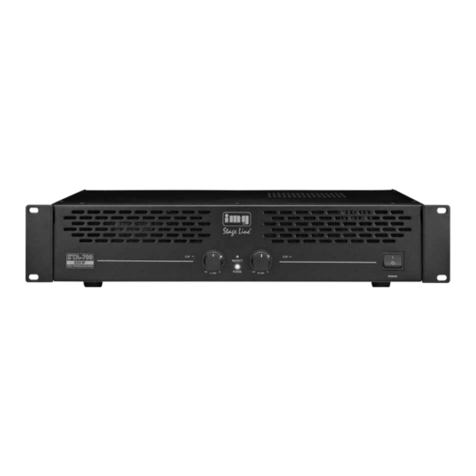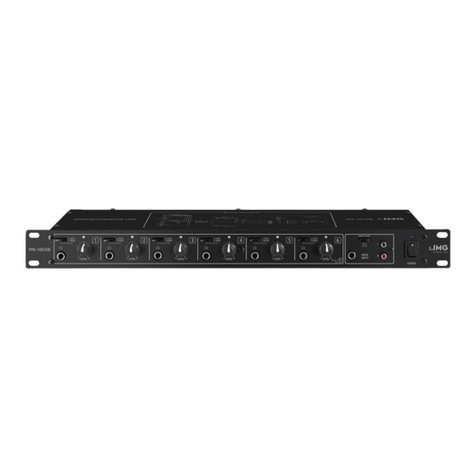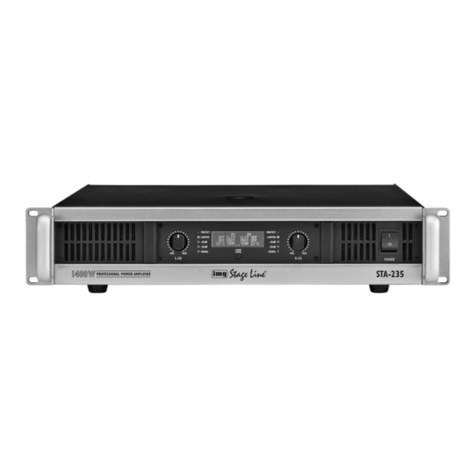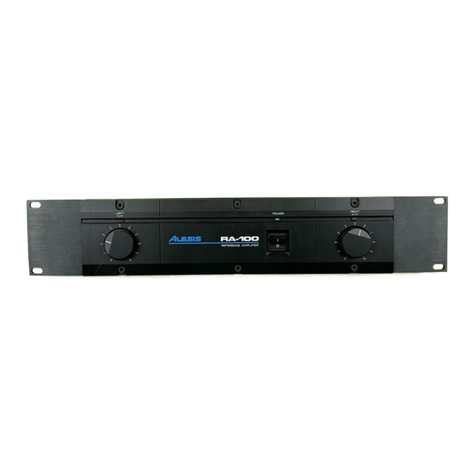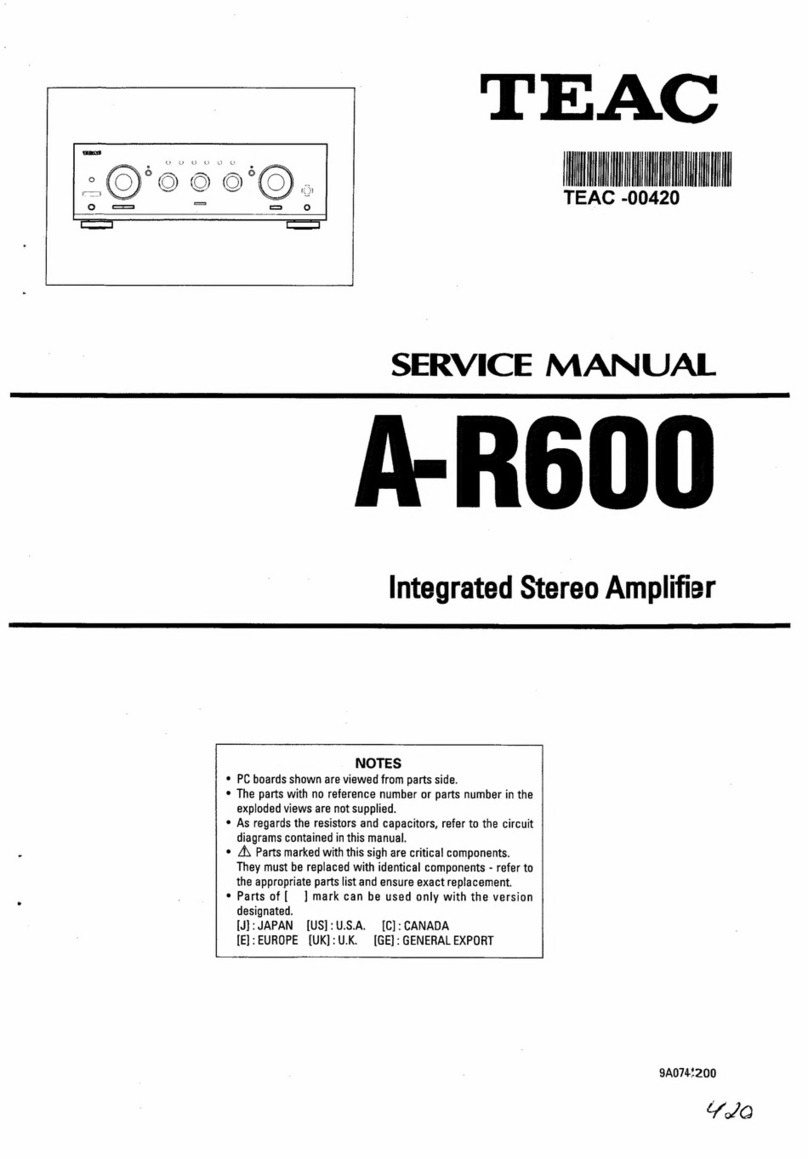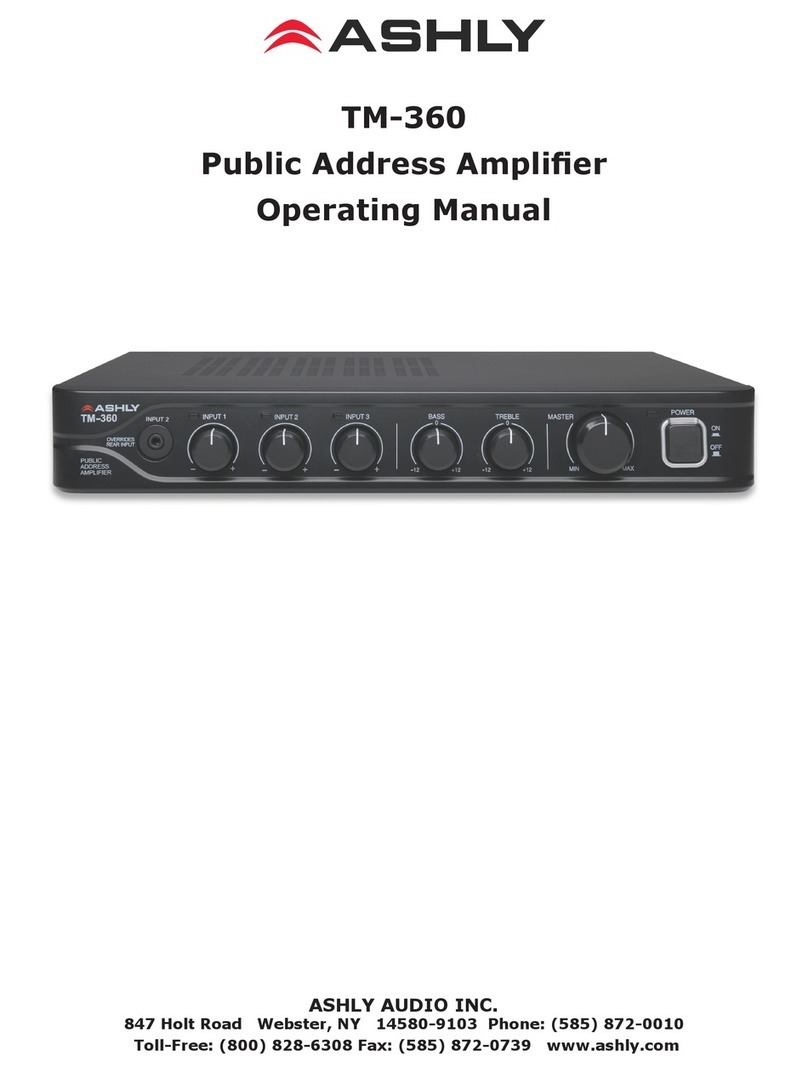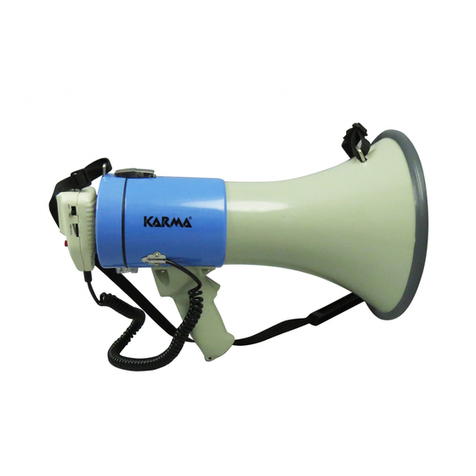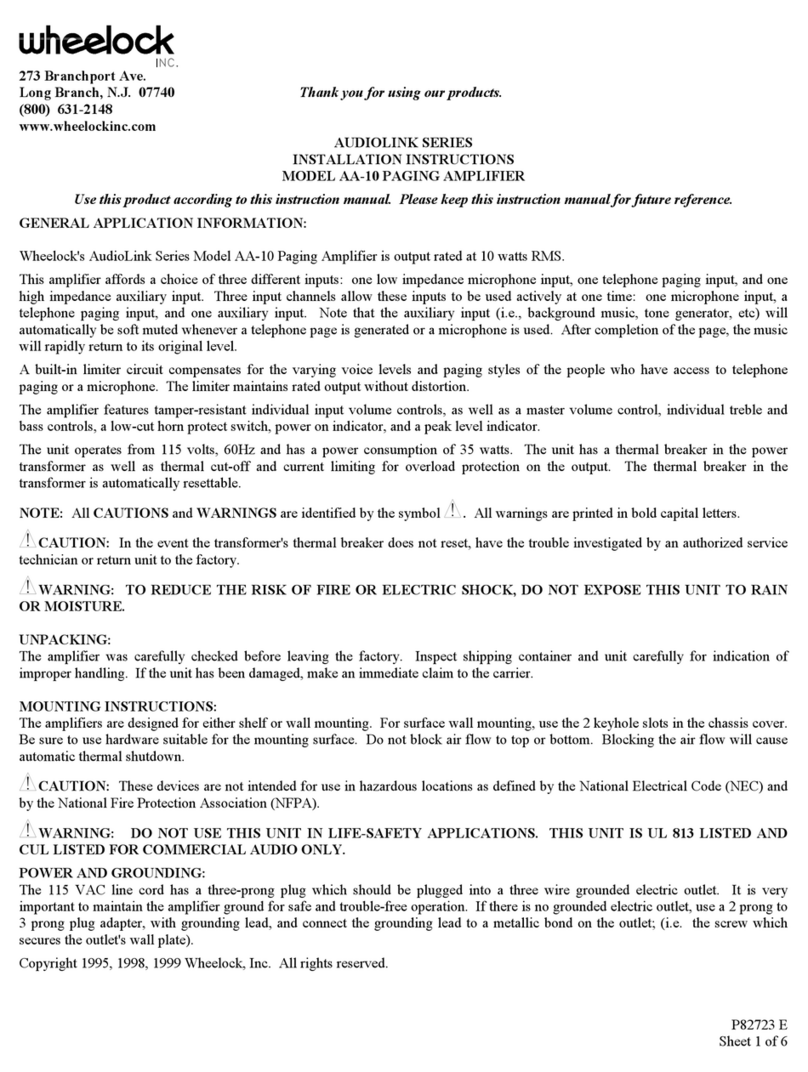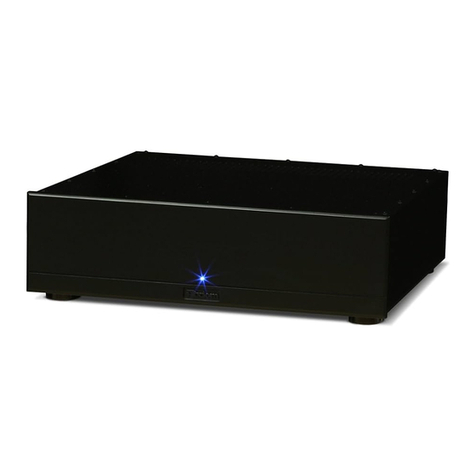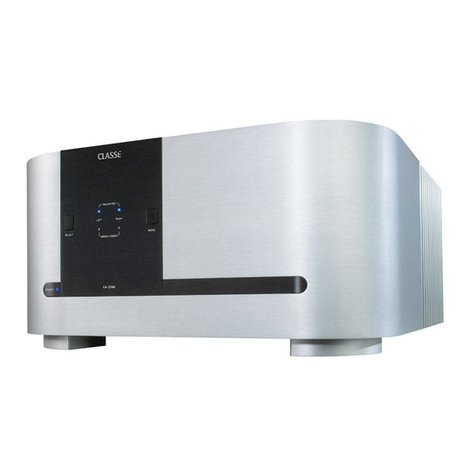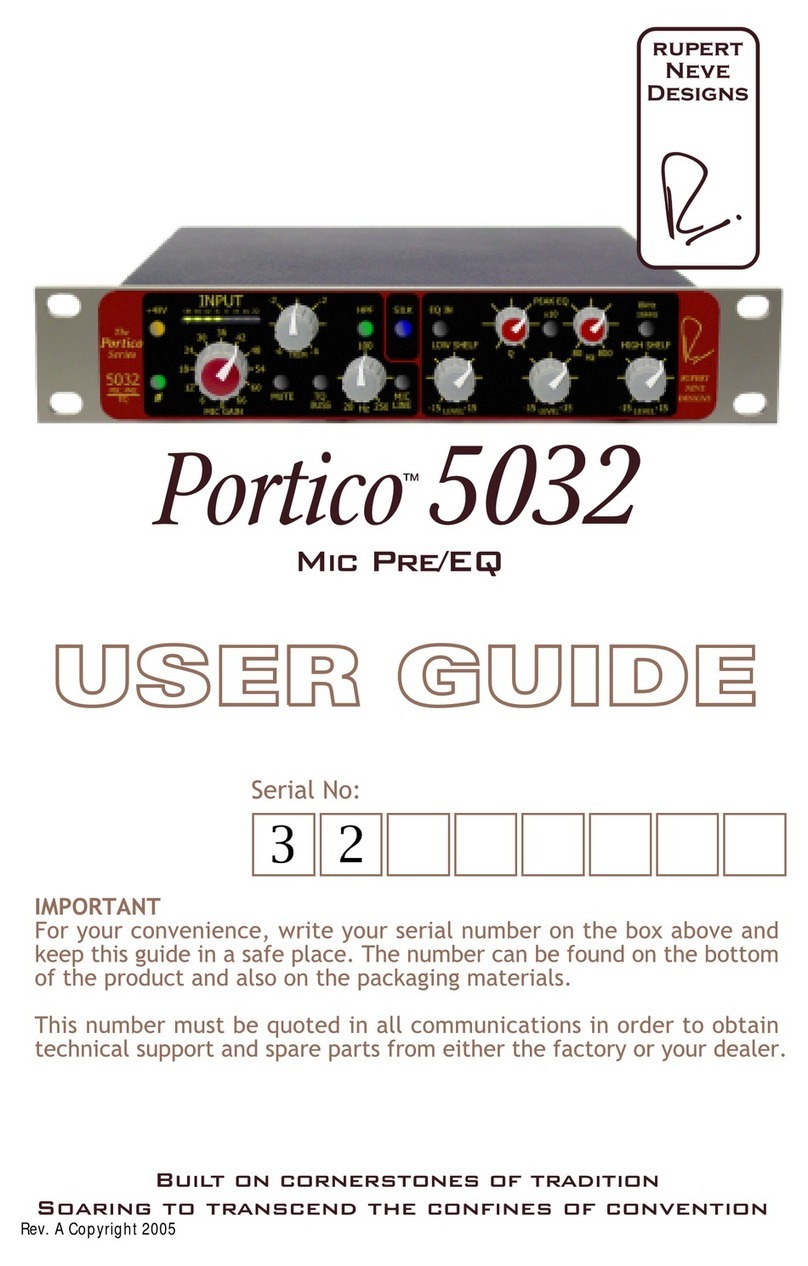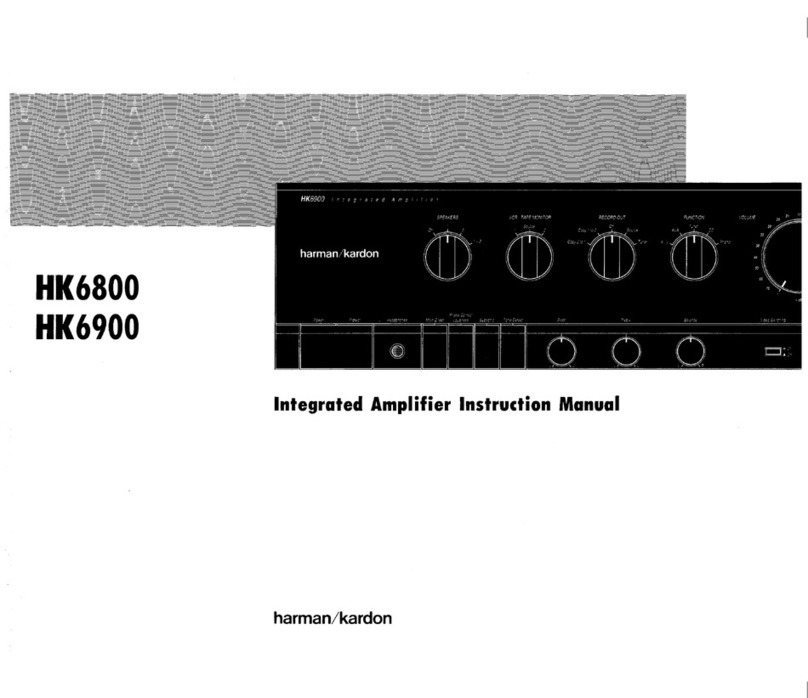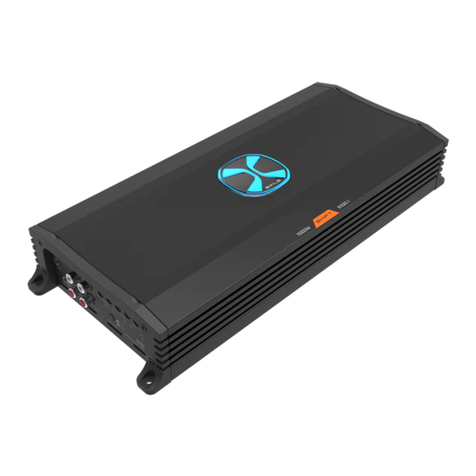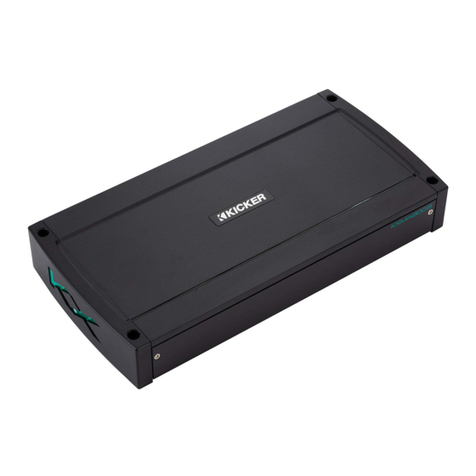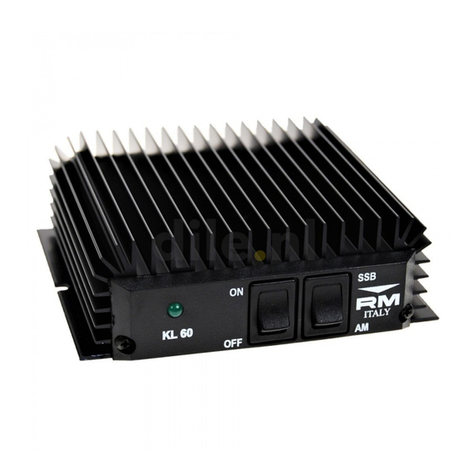MPR-1
Bestell-Nr. 21.2010
wwwwww..iimmggssttaaggeelliinnee..ccoomm
Preamplificatore a 1 canale per
microfono
Vi preghiamo di leggere attentamente le presenti istru-
zioni prima della messa in funzione e di conservarle per
un uso futuro.
1 Possibilità dʼimpiego
Con il MPR-1 è possibile collegare un microfono con lʼin-
gresso Line di un apparecchio audio (mixer, registratore
ecc.). Per un microfono ad alimentazione phantom si può
attivare lʼalimentazione phantom (30 V
).
2 Avvertenze di sicurezza
Gli apparecchi (preamplificatore e alimentatore rete) sono
conformi a tutte le direttive rilevanti dellʼUE e pertanto por-
tano la sigla .
GFar funzionare gli apparecchi solo allʼinterno di locali.
Proteggerli dall'acqua gocciolante e dagli spruzzi d'ac-
qua, da alta umidità dell'aria e dal calore (temperatura
dʼimpiego ammessa fra 0 e 40 °C).
G
Per la pulizia usare solo un panno morbido, asciutto; non
impiegare in nessun caso prodotti chimici o acqua.
ATTENZIONE! Lʼalimentatore rete funziona con ten-
sione di rete. Non intervenire mai al suo interno; la mani-
polazione scorretta può provocare delle scariche peri-
colose.
G
Nel caso dʼuso improprio, di collegamenti sbagliati, di
impiego scorretto o di riparazione non a regola dʼarte
degli apparecchi, non si assume nessuna responsabilità
per eventuali danni consequenziali a persone o a cose
e non si assume nessuna garanzia per gli apparecchi.
3 Messa in funzione
1) Collegare il microfono con la presa jack INPUT (5) o
con la presa XLR INPUT (6).
2) Collegare la presa dʼingresso Line dellʼapparecchio
audio con la presa jack OUTPUT (8) o con la presa
XLR OUTPUT (7).
3) Se alla presa XLR (6) è collegato un microfono con ali-
mentazione phantom, attivare lʼalimentazione phan-
tom con il tasto PHANTOM POWER (2).
4) Inserire la spina per alimentazione DC dellʼalimenta-
tore nella presa “
12
V
” (9) ed inserire lʼalimentatore in
una presa di rete (230 V~/50 Hz). Lʼamplificatore è ora
ATTENZIONE! Nel caso di un microfono asimme-
trico, lʼalimentazione phantom non deve essere atti-
vata; altrimenti il microfono può subire dei danni.
Se si desidera eliminare gli apparecchi definiti-
vamente, consegnarli per lo smaltimento ad
un'istituzione locale per il riciclaggio.
in funzione e la spia verde di funzionamento (1) rimane
accesa.
5) Adattare il volume del microfono allʼapparecchio audio
collegato, servendosi del regolatore GAIN (4). Se si
accende la spia rossa di sovrapilotaggio CLIP (3),
abbassare il regolatore GAIN in corrispondenza.
6) Dopo il funzionamento staccare lʼalimentatore dalla
presa di rete per non consumare inutilmente della cor-
rente.
4 Dati tecnici
Gamma di frequenze: . . . . . . 10 – 30 000 Hz
Ingresso XLR: . . . . . . . . . . . . 3,5 mV/10 kΩ, simm.
Ingresso jack 6,3 mm: . . . . . . 16 mV/10 kΩ, simm.
Tensione dʼuscita: . . . . . . . . . 1 V
Amplificazione max.
per collegamento bil.: . . . 50 dB
per collegamento sbil.: . . . 44 dB
Rapporto S/R: . . . . . . . . . . . > 58 dB
Fattore di distorsione: . . . . . . < 0,1 %
Alimentazione: . . . . . . . . . . . ramite alimentatore
in dotazione
Con riserva di modifiche tecniche.
Preamplificador de micrófono
de 1 canal
Lea atentamente las instrucciones de funcionamiento antes
de utilizar el aparato y guárdelas para usos posteriores.
1 Aplicaciones
El MPR-1 permite conectar un micrófono a una entrada
de línea de una unidad de audio (mezclador, grabador,
etc.). Para un micrófono con alimentación phantom, una
alimentación phantom (30 V
) puede ser conectado.
2 Consejos de utilización y de seguridad
Los aparatos (preamplificador y alimentador de red) cum-
plen con todas las directivas relevantes por la UE y por
tanto están marcados con el símbolo .
GLos aparatos están concebidos sólo para una utiliza-
ción en interior; protegerlos contra todo tipo de proyec-
ciones de aguas, de las salpicaduras de agua, de la
humedad elevada del aire, y del calor (temperatura de
funcionamiento admisible 0 – 40 °C).
GPara limpiar, utilizar un paño seco y suave, en ningún
caso con productos químicos ni agua.
¡ATENCIÓN! El alimentador de red tiene un alto voltaje.
No tocar jamás el interior de esta unidad. Durante una
incorrecta manipulación, podría sufrir una descarga
eléctrica mortal.
GRechazamos cualquier responsabilidad en caso de
daños materiales o corporales resultandos si las uni-
dades se utilizan en otro fin para el cual han sido fabri-
cadas, si no están correctamente conectadas o utiliza-
das o reparadas por una persona habilitada; por estos
mismos motivos carecería todo tipo de garantía.
3 Funcionamiento
1) Conectar el micrófono a la toma de 6,3 mm INPUT (5)
o a la toma XLR INPUT (6).
2)
Conectar la toma de entrada de línea de la unidad de
audio a la toma de 6,3 mm OUTPUT (8) o a la toma XLR
OUTPUT (7).
3) Si un micrófono con alimentación phantom se conecta
a la toma XLR (6), conectar la alimentación phantom
con la tecla PHANTOM POWER (2).
4) Conectar la toma de bajo voltaje del alimentador de
¡PRECAUCIÓN! En caso de un micrófono asimé-
trico, la potencia phantom no debe conectarse. El
micrófono puede dañarse.
Cuando los aparatos están definitivamente saca-
dos del servicio, deposite los aparatos en una
fábrica de reciclaje de proximidad para contribuir
a una eliminación no contaminante.
red a la toma “12 V
” (9) y el alimentador a la toma
principal de 230 V~/50 Hz. El amplificador funciona y
el LED (1) verde se ilumina.
5) Con el potenciómetro GAIN (4) adaptar el volumen del
micrófono a la unidad de audio conectada. Si el LED
CLIP (3) rojo de sobrecarga se ilumina, girar atrás el
potenciómetro GAIN correspondientemente.
6) Después del funcionamiento desconectar el alimenta-
dor de la toma principal de manera que no se consuma
potencia innecesariamente.
4 Especificaciones
Rango frecuencia: . . . . . . . . . 10 – 30 000 Hz
Entrada XLR: . . . . . . . . . . . . 3,5 mV/10 kΩ, sim.
Entrada conector de 6,3 mm: 16 mV/10 kΩ, sim.
Voltaje salida: . . . . . . . . . . . . 1 V
Máx. gain
para conexión sim.: . . . . . 50 dB
para conexión asim.: . . . . 44 dB
Relación S/N: . . . . . . . . . . . . > 58 dB
Tasa de distorsión: . . . . . . . . < 0,1 %
Alimentación: . . . . . . . . . . . . vía alimentador
conectado
Sujeto a modificaciones técnicas.
Jednokanałowy przedwzmac-
niacz mikrofonowy
Przed rozpoczęciem pracy proszę zapoznać się z niniej-
szą instrukcją a następnie zachować ją do wglądu.
1 Zastosowanie
MPR-1 wzmacnia sygnał mikrofonowy do poziomu umoż-
liwiającego podłączenie go do wejścia liniowego urzą-
dzenia audio (mikser, wzmacniacz, urządzenie nagrywa-
jące, itp.). Umożliwia także włączenie napięcia zasila-
jącego mikrofon – phantom (30 V
).
2 Środki bezpieczeństwa
Urządzenia (przedwzmacniacz oraz zasilacz) spełniają
wszystkie wymogi norm UE i dlatego posiadają oznacze-
nie certyfikatem .
GUrządzenie jest przeznaczone tylko do użytku
wewnątrz pomieszczeń. Należy chronić przed dosta-
niem się jakiejkolwiek cieczy do środka urządzenia,
dużą wilgotnością oraz ciepłem (temperatura otocze-
nia powinna wynosić od 0 – 40 °C).
GDo czyszczenia należy używać tylko suchej, miękkiej
UWAGA! Zasilacz jest zasilany niebezpiecznym dla
życia napięciem zmiennym. Aby uniknąć porażenia elek-
trycznego nie wolno otwierać urządzenia. Jego naprawą
powinien zajmować się tylko przeszkolony personel.
ściereczki. Nie wolno używać wody ani żadnych środ-
ków chemicznych.
GNie ponosi się odpowiedzialności za wynikłe uszko-
dzenia sprzętu lub obrażenia użytkownika w przy-
padku, gdy urządzenia są wykorzystywane w innych
celach niż to się przewiduje lub, jeśli są nieodpowied-
nio zainstalowane, użytkowane lub naprawiane.
3 Przygotowanie do pracy
1) Podłączyć mikrofon do gniazda INPUT (5) typu duży
jack 6,3 mm lub do gniazda INPUT (6) typu XLR.
2) Podłączyć wejście liniowe urządzenia audio do
gniazda OUTPUT (8) typu duży jack 6,3 mm lub do
gniazda OUPUT (7) typu XLR.
3) Dla mikrofonów wymagających napięcia zasilania
(phantom): należy je podłączyć do gniazda XLR (6),
włączyć zasilanie przyciskiem PHANTOM POWER (2).
UWAGA! W przypadku używania mikrofonów niezba-
lansowanych, należy wyłączyć napięcie zasilające
phantom. W przeciwnym razie można w ten sposób
uszkodzić mikrofon.
Po całkowitym zakończeniu eksploatacji urzą-
dzenie należy oddać do punktu utylizacji odpa-
dów.
E
I
PL 4) Podłączyć wtyk zasilacza do gniazda wzmacniacza
“12 V
” (9), a następnie zasilacz do sieci (230 V~/
50 Hz). Zapali się zielony wskaźnik (1), wzmacniacz
jest gotowy do pracy.
5) Za pomocą regulatora GAIN (4) ustawić odpowiednią
głośność. Jeżeli zapali się czerwony wskaźnik CLIP
(3) świadczący o przesterowaniu, należy zmniejszyć
głośność.
6) Po zakończeniu pracy, odłączyć zasilacz z sieci.
4 Dane techniczne
Pasmo przenoszenia: . . . . . . 10 – 30 000 Hz
Czułość wejścia zbal.: . . . . . 3,5 mV/10kΩ
Czułość wejścia zbal.: . . . . . 16 mV/10 kΩ
Napięcie wyjściowe: . . . . . . . 1 V
Maks. wzmocnienie
przy połączeniu sym.: . . . 50 dB
przy połączeniu niesym: . 44 dB
Stosunek S/N: . . . . . . . . . . . > 58 dB
THD: . . . . . . . . . . . . . . . . . . . < 0,1 %
Zasilanie: . . . . . . . . . . . . . . . z zasilacza
Z zastrzeżeniem do możliwych zmian.
®
MONACOR INTERNATIONAL GmbH & Co. KG
•
Zum Falsch 36
•
28307 Bremen
•
Germany
Copyright
©
by MONACOR INTERNATIONAL. All rights reserved. A-0284.99.04.03.2014


